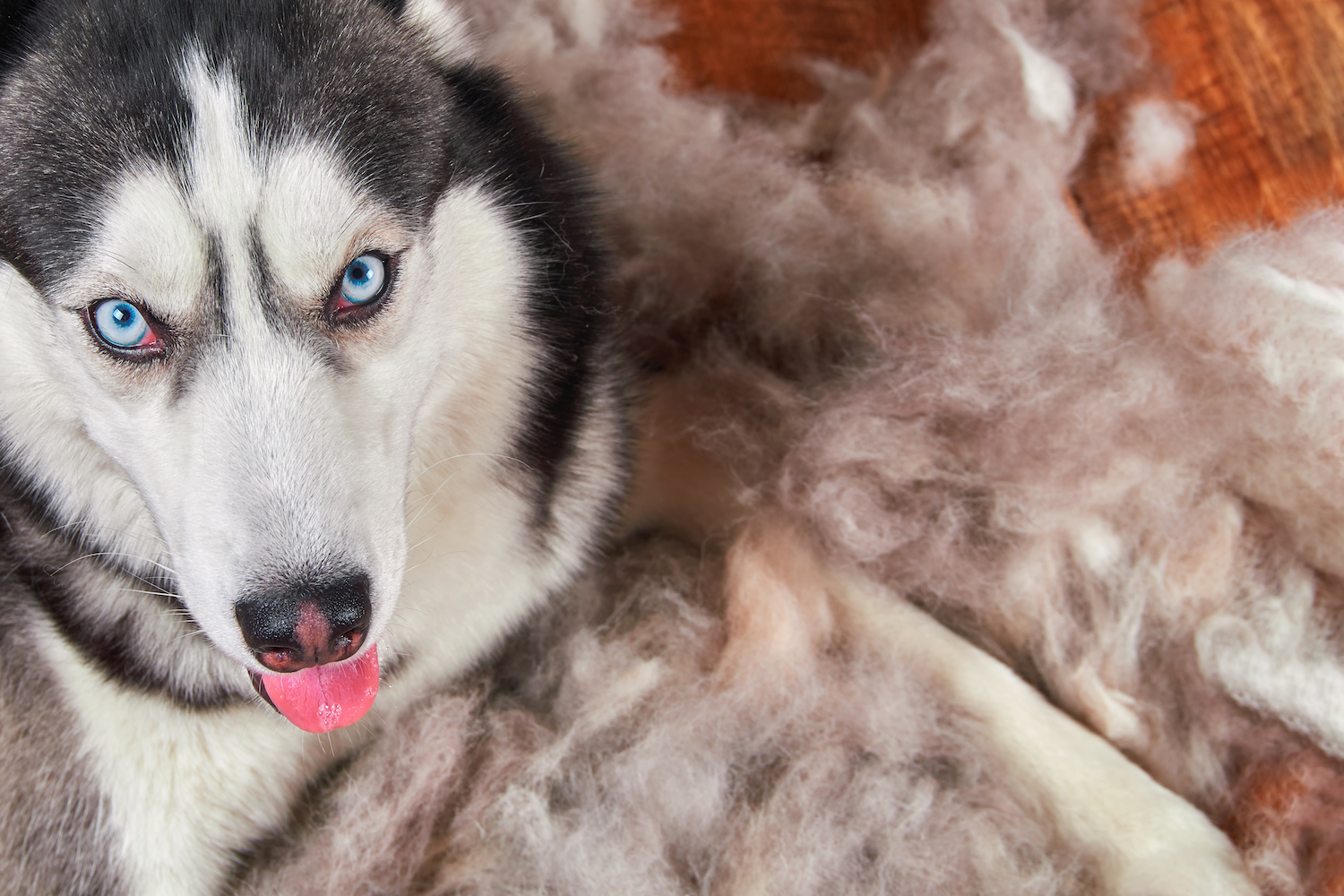Not a big fan of the hair your pet leaves behind on your clothes and furniture? You’re not alone. Every year millions of dollars and hours are spent trying to prevent shedding or clean up after it. If you’re looking for the secret to keeping your animal from shedding, then I have some bad news for you. There really is no way to stop your pet from shedding. All is not lost, though, as there are things you can do and information you should know that can help minimize shedding issues in your home.
Why Does Your Pet Shed?
Why does your dog or cat leave their fur everywhere? Just like with humans, these animals naturally shed to rid themselves of old or damaged hair and make room for new growth. (If you have someone in your home with long hair, I’m sure you’ve found yourself pulling one of their never-ending strands from your couch at some point, right?)
Our four-legged counterparts have a considerably denser concentration of hair all over their bodies. According to the American Animal Hospital Association, the primary shedding drivers are hormones triggered by sunlight, hence why the most shedding takes place in the spring, when daylight starts to finally kick in for longer durations post-winter. Shedding can also be triggered by illness, stress and injury. These cases are obviously more extreme – it’s best to schedule a visit with us during such episodes.
How Can You Stop Your Pet Shedding?
As mentioned earlier, you can’t – full stop. It’s a natural process and all pets will shed their fur, though some shed more than others. However, there are ways to prevent excessive shedding. As with any health concern, a proper and balanced diet is key and will promote healthy skin and fur from the inside out. Routine grooming also promotes hide-health, and regular vet checks go a long way in catching or preventing issues that could cause your dog or cat to shed excessively.
Once again looking at how hair works in humans, if we don’t brush our hair and care for it regularly, it tends to fall wherever it may, versus being collected by a brush and then easily disposed of. The same goes for dogs and cats. By brushing them routinely, you control where the majority of the hair will go – into the brush. Do the deed outside and any fly-aways can float off in the breeze.
What Can You Do to Manage Shedding?
Given there’s no way to get around shedding, even when adopting the recommendations above, you can manage its impact easily enough. You can keep a hair-trapping rolling brush handy or you can just as easily remove hair on clothes and furniture with box tape. Unused dryer sheets can help collect small amounts of hair, though only on light colored clothes (some brands leave visible detergent streaks on dark clothing). As discussed, take pet grooming outdoors or into a designated area like a bathtub where escapee hair won’t have the ability to travel too far and can be cleaned up quickly post-brushing.
Should you get a short-haired pet then, if you have allergies?
Not necessarily. It’s a myth that long hair on animals means more sneezing and wheezing. What actually triggers cat and dog allergies in humans isn’t the hair itself, but what is often attached to it – the animal’s dander. From the American Academy of Allergy Asthma & Immunology: “The proteins found in a pet’s dander, skin flakes, saliva and urine can cause an allergic reaction or aggravate asthma symptoms in some people. Also, pet hair or fur can collect pollen, mold spores and other outdoor allergens.” Even if you select a pet with little or no hair, they obviously still have skin, so dander will always be an issue. However, there are some cat and dog breeds that are considered “hypoallergenic.” This only means they produce less dander than other breeds, so some people may be able to manage their allergies more easily with one of these dogs or cats.
Not worried about allergies but still concerned about shedding?
What ultimately determines the shedding potential of your dog or cat boils down to their breed. In general, if their breed is originally from a mountainous region or a location prone to extreme weather (especially cold), you can bet they will shed copious amounts of fur. This is because these breeds have an extra undercoat to battle the elements. For you it’s like getting two for the price of one in terms of cat hair and dog hair!
There are plenty of sites around the web that list what they consider the “top” least shedding breeds or those that shed the most. There is some overlap here and there, but each list is a bit different than the next, resulting in no definitive guide. Should you be in the market for a new pet, we’ve gathered a handful of shedding-related lists for you to peruse here:
- The 10 Dog Breeds That Shed the Least (iHeartDogs)
- The 10 Dog Breeds That Shed the Most (iHeartDogs)
- Cat Breeds with Minimal Shedding (Purina)
- Top 9 Cats That Shed The Most Fur (CatTime)
If you are concerned that your pet is shedding more than he or she should, schedule an appointment so we can take a look.







